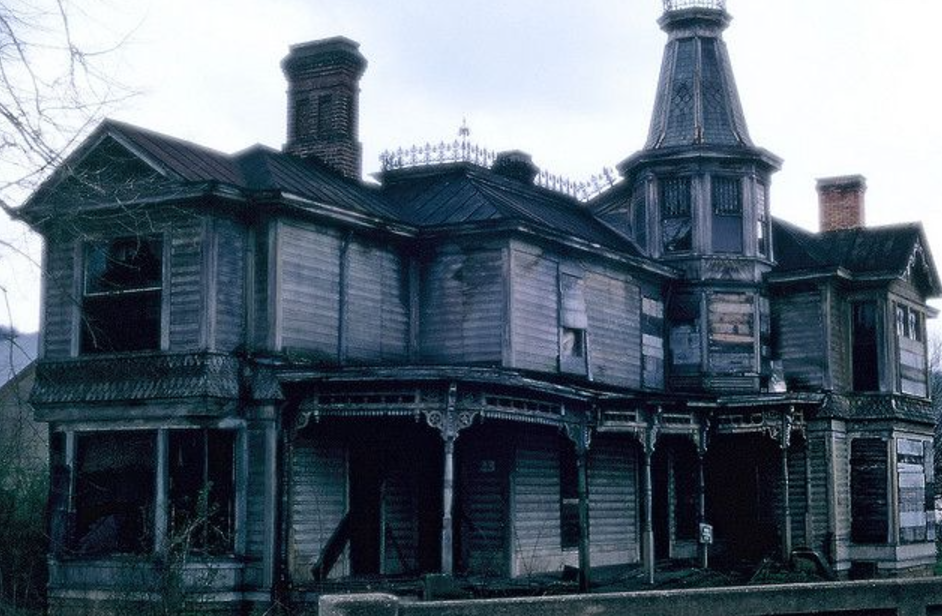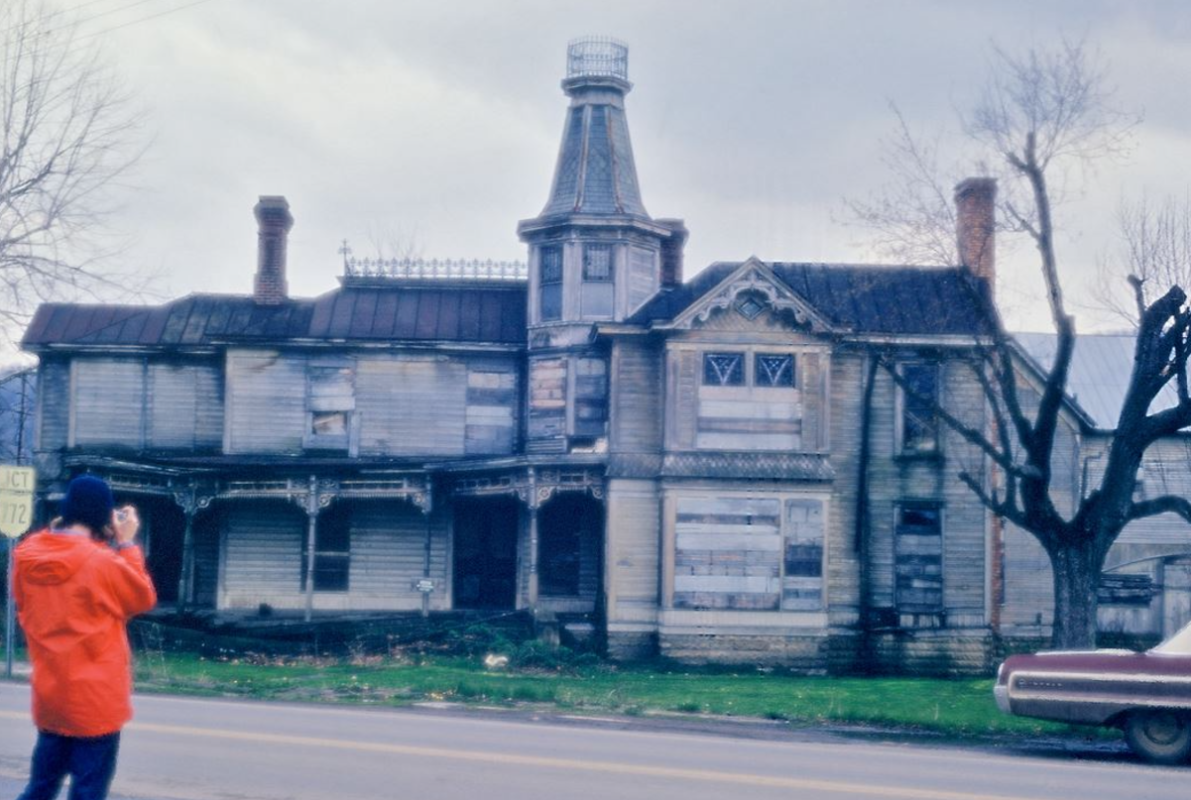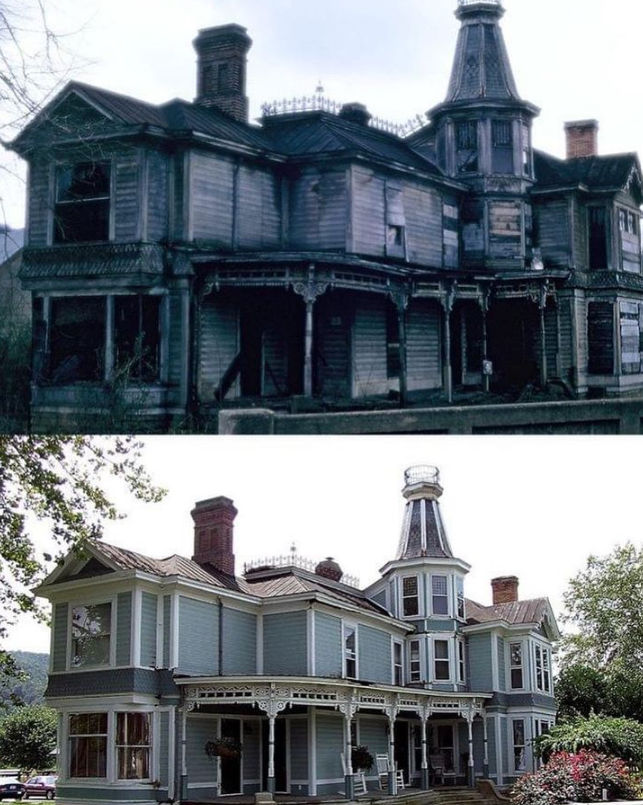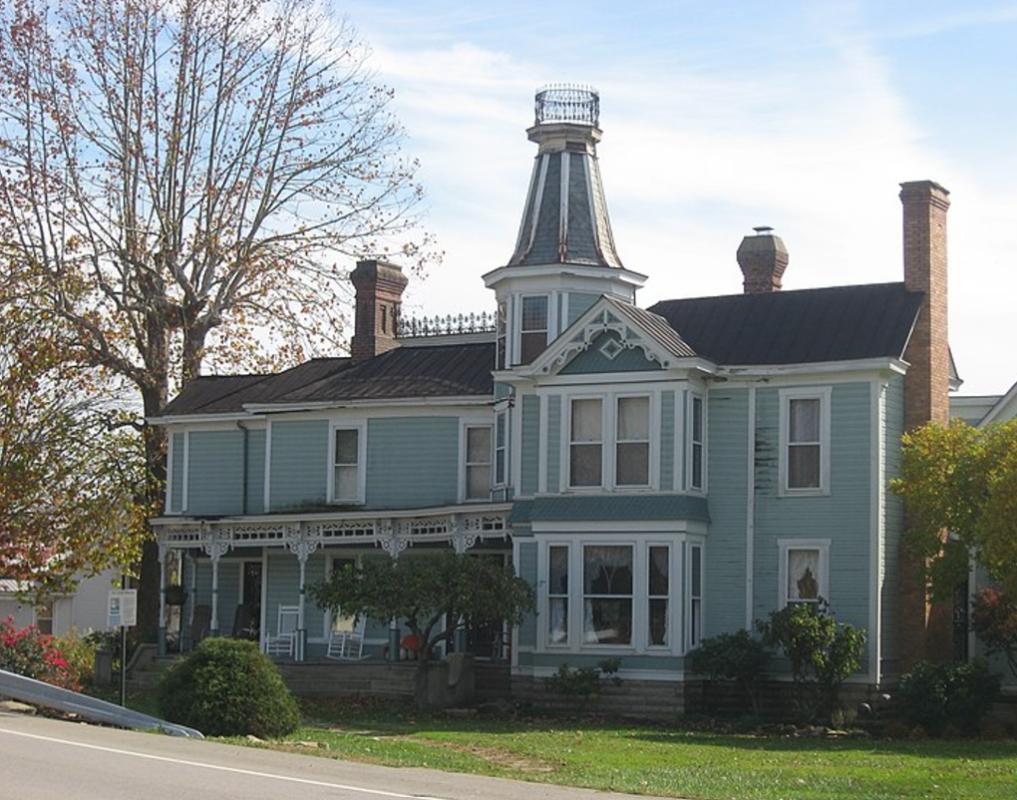In the quiet village of Rarden, Ohio, a population of just over 150, a remarkable transformation has taken place. Here archeology.dulichvn.net updates a Victorian home, once abandoned and forgotten, that has been meticulously restored, demonstrating the power of preservation and the beauty of architectural revival. Built in 1900 by Lafayette Taylor, a prosperous local businessman, the home reflects the history and resilience of a small American community.
The History of the Victorian Home in Rarden, Ohio
Restoring a historic house is akin to breathing life back into a forgotten chapter of history. The Victorian home in Rarden, Ohio, stands as a testament to resilience, innovation, and the enduring beauty of craftsmanship. Built in 1900 by Lafayette Taylor, this home is more than just a building; it is a piece of the past, echoing the stories of prosperity, decline, and revival.

Lafayette Taylor: The Visionary Builder
Every masterpiece begins with a visionary, and Lafayette Taylor was that figure for this Victorian gem.
Success in Sandstone and Lumber
A Local Mogul: Lafayette Taylor built his fortune by mining sandstone and operating a successful lumber mill in Rarden.
Economic Driver: His businesses not only enriched him but also brought economic activity and jobs to the small community.
A Reputation Cemented: By the turn of the century, Taylor had become one of Rarden’s most prominent and influential figures.
An Ambitious Construction
Architectural Excellence: In 1900, Taylor used his wealth and access to premium materials to construct a grand Victorian home, showcasing the ornate design and fine craftsmanship of the era.
Blending Styles: The house was a perfect fusion of local resources and the intricate architectural features typical of Victorian design.
A Community Landmark: Its imposing structure and detailed design made it a centerpiece of Rarden, admired by locals and visitors alike.
See more: The Acropolis of Athens—Then vs. Now: A Journey Through Time
The Restoration Effort
Restoring the Victorian home was no small feat. It required a passionate owner, a deep respect for history, and an unwavering commitment to quality.

Visionary Owners with a Dream
A New Beginning: In the early 2000s, a new owner with a profound appreciation for history acquired the property.
Restoration Vision: Determined to breathe life back into the dilapidated structure, the owner embarked on a mission to restore the house to its former glory.
Community Involvement: Local craftsmen and preservationists were brought on board to contribute their expertise, ensuring a collaborative effort.
Preserving Authenticity
Honoring Taylor’s Legacy: The restoration process was guided by the goal of maintaining the original character envisioned by Lafayette Taylor.
Meticulous Material Sourcing: Period-appropriate materials were sourced to replace damaged elements, from handcrafted woodwork to vintage glass panes.
Attention to Detail: Every element, from the ornate gables to the intricate moldings, was painstakingly restored or replicated to ensure historical accuracy.
See more: The Scarab Pectoral from Tutankhamun’s Tomb: A Symbol of Rebirth
Overcoming Challenges
Structural Repairs: Decades of neglect had taken their toll on the foundation and framework, requiring extensive structural reinforcement.
Navigating Budget Constraints: The restoration was funded through a mix of personal investment and grants, balancing cost-effectiveness with quality.
Weathering the Elements: Protecting the house from further damage during the restoration process was a constant challenge, particularly given Ohio’s unpredictable weather.
The Significance of Restoring the Victorian Home in Rarden
The restoration of the Victorian home in Rarden, Ohio, is more than a project of beauty—it’s a story of legacy, resilience, and community pride. This effort transforms a decaying relic into a beacon of hope, history, and inspiration for future generations, blending cultural preservation with a powerful message about the value of restoration.

Honoring Local History and Heritage
The restored Victorian home pays homage to its past and the man who built it, Lafayette Taylor, while preserving the architectural legacy of the era.
1. A Legacy Preserved
Lafayette Taylor’s Contribution: The restoration immortalizes the life and vision of Lafayette Taylor, a local entrepreneur who built the home in 1900 during Rarden’s prosperous days. His story reflects the ambition and industriousness of small-town America at the turn of the 20th century.
A Testament to the Past: The home serves as a physical reminder of Rarden’s history, capturing the essence of its economic peak during the sandstone mining and lumber milling boom.
2. Architectural Significance
Victorian craftsmanship: Victorian homes are renowned for their detailed designs, and this house is no exception. From its intricate woodwork to its tall gables, every element tells a story of craftsmanship and artistry.
Blending Old with New: While preserving its historical charm, the home now includes modern amenities, creating a harmonious balance between the past and present.
3. Cultural Symbolism
Reflecting an Era: This home stands as a symbol of rural prosperity and the resilience of small communities. It tells the story of American industrial growth and the challenges faced by towns like Rarden as industries declined.
Reviving Community Identity: Restoring such landmarks helps small towns like Rarden reclaim their historical and cultural identities, ensuring these stories are not lost to time.
Why Restorations Like This Matter
Restoring historic homes goes far beyond enhancing visual appeal. It plays a vital role in safeguarding history, strengthening community bonds, promoting environmental sustainability, and inspiring others to embrace the value of preservation. Let’s explore why restoration projects like this Victorian home in Raven hold profound significance.

1. Reviving Forgotten Stories
Every historic home has a story to tell, and restoration breathes life into these narratives, ensuring they are not lost to time.
- Personal Histories: This Victorian home reflects the legacy of Lafayette Taylor, a successful entrepreneur whose efforts epitomized the spirit of innovation and resilience in early 20th-century Rarden. By restoring the house, his story and contribution to the town remain an integral part of its cultural narrative.
- Architectural Heritage: The restoration preserves the intricate design elements of Victorian architecture, such as ornate woodwork and tall gables, which might otherwise fade into obscurity. These homes serve as tangible examples of a bygone era’s craftsmanship.
- Community Identity: Restorations like this serve as powerful reminders of shared history, helping communities reconnect with their roots and fostering a sense of pride in their heritage. They become symbols of collective memory, uniting residents through their cultural significance.
2. Environmental Benefits
Restoring historic structures isn’t just about preserving history; it’s also an eco-friendly practice that contributes to sustainable development.
- Sustainable Practices: Renovating old buildings consumes significantly fewer resources than demolishing them and constructing new ones. This reduces waste and the carbon footprint associated with new construction.
- Recycling Materials: Utilizing original materials such as wood, brick, or stone not only maintains the home’s authenticity but also minimizes the need for new resources, supporting environmental conservation efforts.
- Green Spaces: Many restoration projects include landscaping that revitalizes the surrounding area, creating green spaces that benefit both the local environment and the community. From gardens to tree-lined yards, these spaces enhance biodiversity and beauty.
3. An Inspiration for Others
When one community successfully restores a historic home, it sparks inspiration far beyond its borders, encouraging others to embrace preservation efforts.
- Promoting Action: The story of the Victorian home’s restoration demonstrates what can be achieved with dedication, vision, and effort. It motivates individuals and organizations to take on similar projects, proving that even neglected structures can be transformed into treasures.
- Building Awareness: Sharing stories of successful restorations raises awareness about the importance of preserving historical buildings. These narratives highlight the cultural, aesthetic, and environmental value that such projects bring to society.
- Fostering Connection: Restored homes act as bridges between generations. They offer a tangible link to the past while providing spaces that are relevant and meaningful in the present. This connection helps communities appreciate their history while looking forward to a sustainable future.
Conclusion
The restoration of the abandoned Victorian home in Rarden, Ohio, is a powerful example of how history, architecture, and community can come together to create something extraordinary. From its origins as Lafayette Taylor’s dream home to its rebirth as a shining beacon of preservation, this house embodies resilience, passion, and the enduring beauty of Victorian design.
As we look to the future, projects like this remind us that preserving our past isn’t just about saving buildings—it’s about saving the stories that make us who we are.

CÁC TIN KHÁC
Mark Twain & Olivia Langdon: A 36-Year Love Story Filled with Laughter and Devotion
The Tollund Man: A 2,400-Year-Old Mystery Preserved in a Danish Bog
Skara Brae: Scotland’s Hidden Neolithic Village
Porta Nigra: The Hidden Depths of Trier’s Iconic Roman Gate